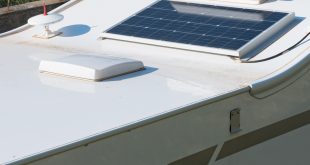Nowadays, you can find plastic materials in every aspect of modern-day life since they have broad applications. Many experts agree on five common categories of plastics, although there are different variations out there, each with its unique features, composition and uses. That said, here are five common types of plastics and their uses.

Polycarbonate
Polycarbonate is a thermoplastic polymer that absorbs little moisture and resists chemicals well. It is also flame retardant and resistant to impact damage. Due to its many desirable features, it is often the preferred material choice in many applications over acrylic, glass, and other materials. Polycarbonate is used for greenhouses, exterior light fixtures, CDs and DVDs, and automotive lights. What’s more, it is used for safety glasses, bullet-resistant glass, and riot sheets. Finally, since durability is an essential priority for skylights, it is preferred to glass for skylight and glazing security lights in many buildings.
Polyvinyl Chloride (PVC)
Polyvinyl chloride (PVC) is the third-most widely produced synthetic plastic polymer worldwide, with approximately forty million tons being produced annually. What’s more, this plastic comes in two primary forms: flexible and rigid. It is cost-effective to produce and resilient to biological and chemical damage, making it easy to mould into shapes. What’s more, PVC is a practical material that is highly versatile, so it has a wide range of applications in many industries. Its rigid form is mainly used to make pipes and other profile applications like windows and doors. Additionally, it is used for manufacturing cable and wire insulation, fashion and footwear, car interiors and seat coverings, medical devices, and flooring. It is also used for toys, credit cards, water bottles, cling films, and blood storage bags.
Polypropylene
Polypropylene (PP) is a thermoplastic polymer that is made by polymerising propylene. It is lightweight, robust, and resistant to chemicals, water, and oil. It is also a hard-wearing plastic that offers one of the best and most effective materials for injection moulding when melted. Besides, PP has a better tolerance for high temperatures than other plastics and is considered a food-safe material. Food containers, straws, clothing, bags, bottles, battery cases, lunch boxes, and kettles are common uses of polypropylene.
Polyethene
Polyethene (PE) is a lightweight and synthetic resin produced from the polymerisation of ethylene. It is the most popular and widely used plastic globally, available in various grades and formulations to suit different needs. Also, it is lightweight, has excellent impact and chemical resistance, and provides near-zero moisture absorption. Moreover, polyethene is used for medical equipment, wire, cable insulation, packaging, piping systems, marine components, food processing parts, and toys.
Acrylic
Acrylic is a solid and transparent plastic material that is commonly used and distributed among many plastic manufacturers. It offers similar clarity, transparency, and brilliance as glass without the risk of shattering. It also weighs about 50% less than glass, making it a preferred option for many applications. Acrylic is used for aquariums, sporting equipment, swimming pool windows, signs, lenses, and screens.
 World inside pictures Collect and share the best ideas that make our life easier
World inside pictures Collect and share the best ideas that make our life easier








